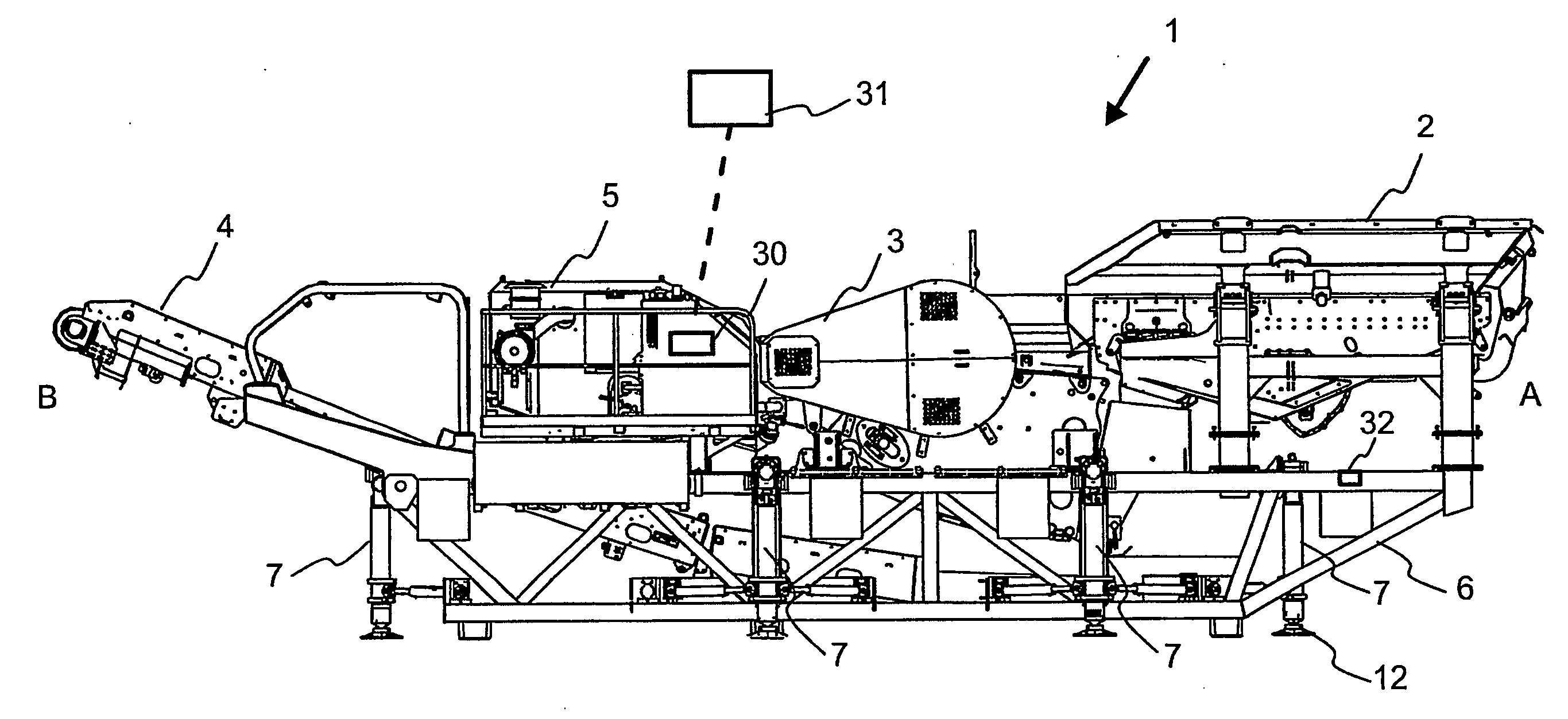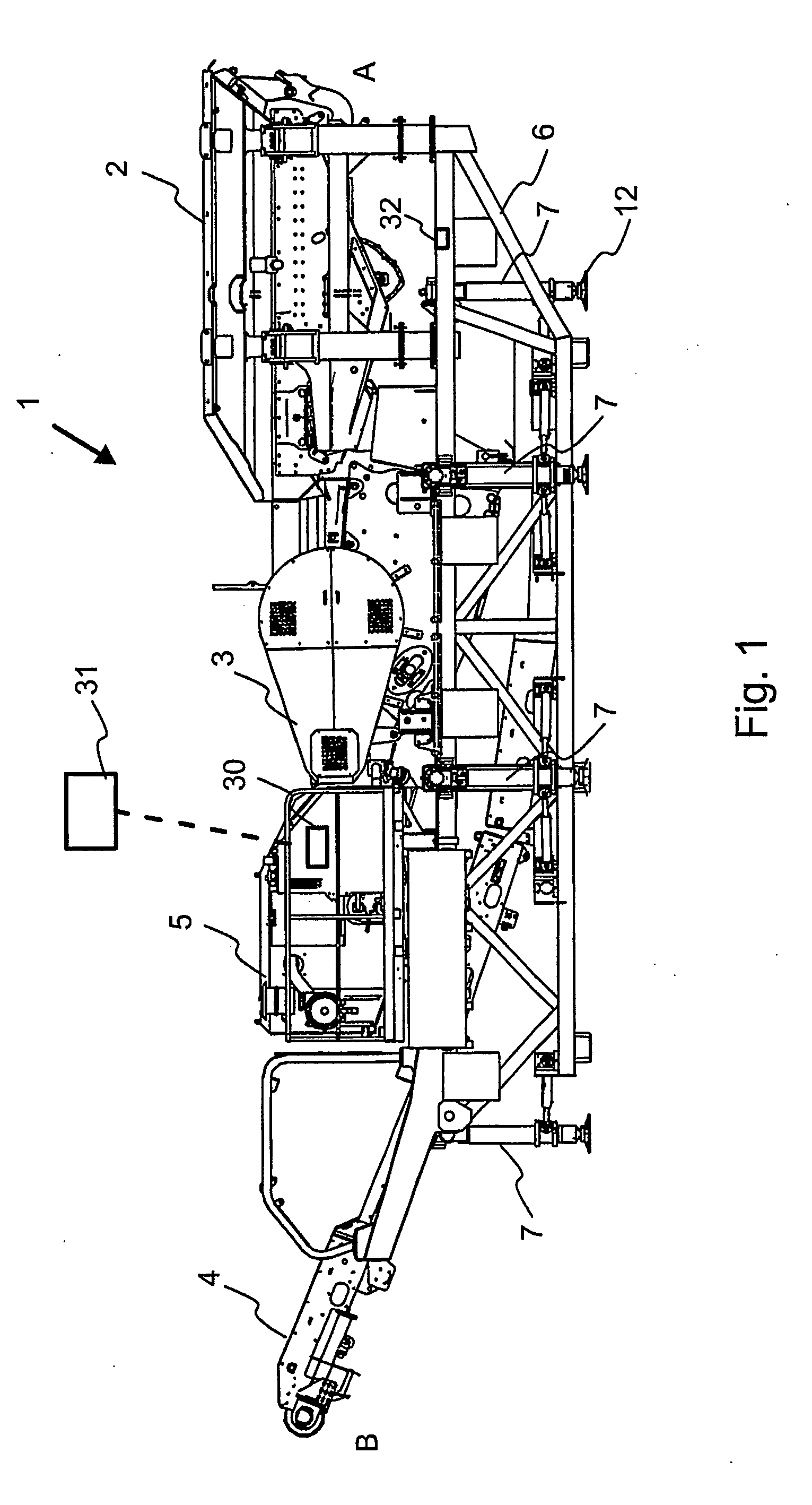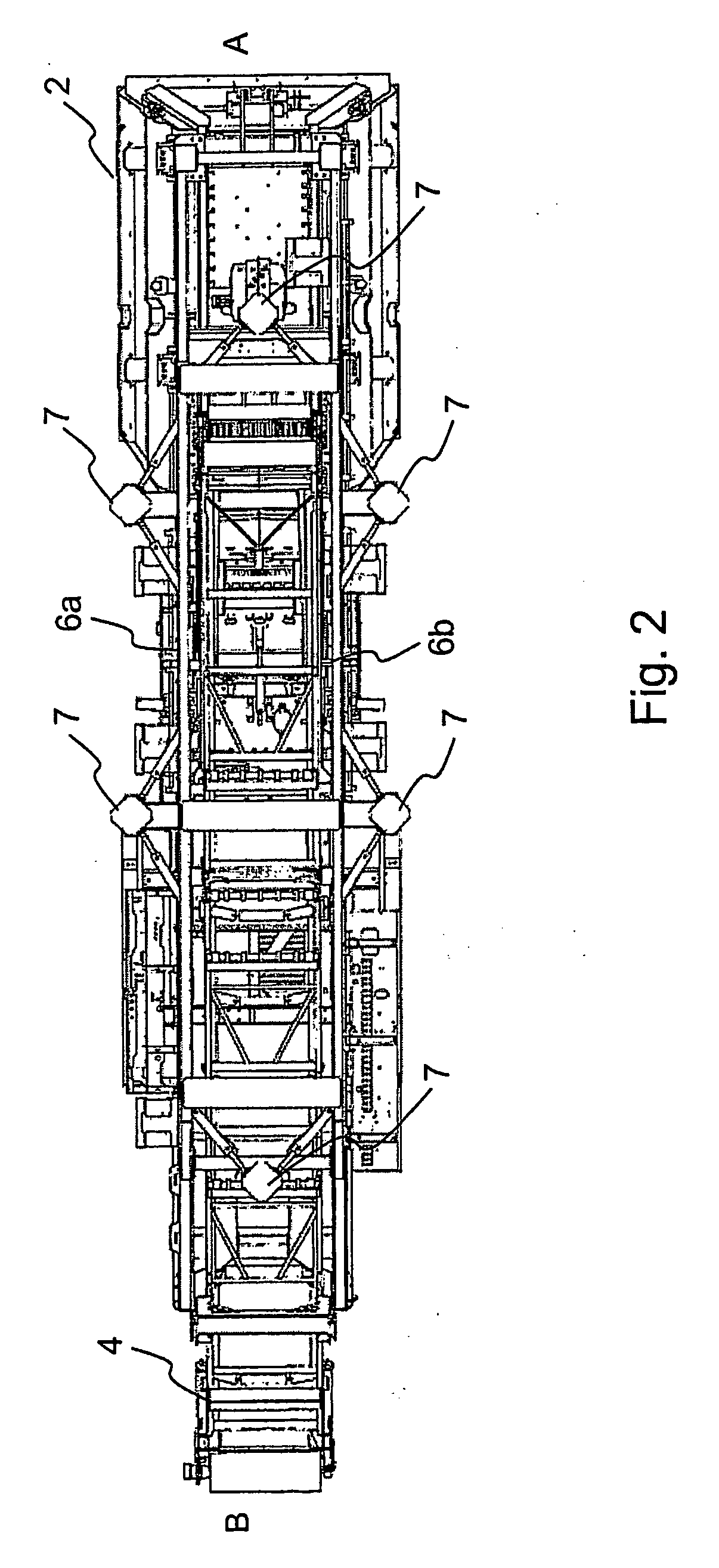Method for moving a material processing device, a device for processing mineral material, and a frame for a processing device
- Summary
- Abstract
- Description
- Claims
- Application Information
AI Technical Summary
Benefits of technology
Problems solved by technology
Method used
Image
Examples
Embodiment Construction
[0038]In this description a processing unit refers to any processing unit suitable for processing materials, such as a feeder, a belt conveyor, a crusher, a screen, or a corresponding device for transferring, refining or sorting material. Processing units used in recycling material, such as shredders and metal separators, belong to this group as well. The material being processed can be mineral material. The mineral material can be ore, broken rock or gravel, various types of recyclable construction waste, such as concrete, bricks or asphalt. The material can also be domestic waste, as well as wood, glass or metal.
[0039]FIG. 1 shows a processing device 1 for mineral material comprising a feeder 2 for feeding material to a crusher 3 and a belt conveyor 4 for conveying the crushed product further away from the device. The crusher in the figure is a jaw crusher, but other types of crushers, such as a gyratory crusher, a cone crusher or a centrifugal crusher can be placed as parts of th...
PUM
 Login to View More
Login to View More Abstract
Description
Claims
Application Information
 Login to View More
Login to View More - R&D
- Intellectual Property
- Life Sciences
- Materials
- Tech Scout
- Unparalleled Data Quality
- Higher Quality Content
- 60% Fewer Hallucinations
Browse by: Latest US Patents, China's latest patents, Technical Efficacy Thesaurus, Application Domain, Technology Topic, Popular Technical Reports.
© 2025 PatSnap. All rights reserved.Legal|Privacy policy|Modern Slavery Act Transparency Statement|Sitemap|About US| Contact US: help@patsnap.com



